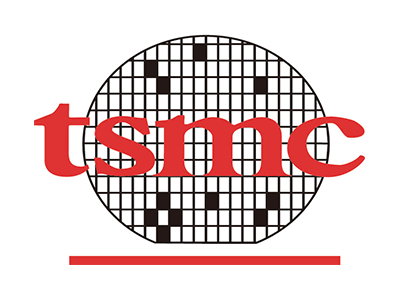台积电(TSM.US)2025年第一季度业绩电话会
文章语言:
简
繁
EN
Share
Minutes
原文
会议摘要
会议速览
In the first quarter of 2025, TSMC experienced a 3.4% sequential decrease in revenue due to smartphone seasonality, mitigated by growing AI demand and recovery from production losses post-earthquake. Advanced technologies accounted for 73% of wafer revenue, with 3nm process technology contributing 22%. The company projects a 13% sequential increase in second quarter revenue, with gross and operating margins expected to range between 57-59% and 47-49% respectively.
The company reports a slight decrease in first quarter gross margin due to external factors and the start-up of new fabs, anticipating further margin dilution as overseas operations ramp up. Despite this, they forecast long-term gross margins of 53% or higher. The 2025 capital budget is set between $38 to $42 billion, with a significant portion allocated to advanced process technologies. The company highlights robust AI-related demand and plans to double AI accelerator revenue in 2025. Additionally, they announce an additional $100 billion investment in Arizona, expanding wafer manufacturing, advanced packaging, and R&D, reflecting a strategic response to customer needs and multi-year demand.
TSMC has completed construction on a facility utilizing 3nm process technology and is accelerating volume production due to high AI demand. Plans include constructing additional fabs using N2 and A16 processes, establishing an R&D center in Arizona, and building specialty technology fabs in Japan and Germany. The company aims to support smartphone, AI, and HPC applications with advanced technologies like N2, N2P, and A16, expecting significant increases in performance, power efficiency, and chip density. TSMC emphasizes its commitment to global expansion while maintaining investment in Taiwan, aiming to be a trusted provider in the global logic IC industry.
The company clarifies that AI demand remains high, necessitating significant capacity expansion, particularly in the US, driven by customer requests and strong AI demand from major US clients. It discusses strategies to balance supply and demand, including doubling cobalt capacity and planning for healthy momentum in 2026. Additionally, the company addresses concerns about margin dilution due to US expansion, stating that geographic manufacturing flexibility is a key value proposition and that discussions with major customers regarding pricing are progressing well.
The discussion focuses on how geopolitical risks, particularly the ban on HP in China, affect TSMC's business, capacity planning, and strategies. There's a query regarding the impact on advanced node capacity utilization and long-term production planning, with a request for more detailed analysis on the buffer or room available in decision-making for future capacity planning.
Despite speculations and potential impacts from recent tariff announcements, the company has not observed changes in customer behavior and remains committed to its planned capacity expansions in Japan and Europe. Instead of slowing down, the focus is on utilizing mature node technology, which is in demand and not fully supported by competitors, considering relocating equipment from Taiwan to overseas facilities rather than pursuing pure new expansions.
The discussion explores whether TSMC is involved in tariff negotiations between the US and Taiwan, noting that as a private company, TSMC does not participate in government-level discussions. The speaker also clarifies that decisions regarding semiconductor-specific tariff exemptions are the responsibility of governments, and TSMC respects this process without direct involvement.
The company discusses strong Q2 revenue growth driven by high demand for 3nm and 5nm technologies, with no observed changes in customer behavior due to tariffs. Uncertainties and potential risks from tariffs are acknowledged, impacting the latter part of the five-year outlook with a widened margin dilution of 3-4% due to inflation and potential tariff-related cost increases.
The dialogue discusses TSMC's desire for fairness in subsidies and incentives in their US expansion, clarifying that fairness means equal opportunity for all companies. Additionally, it addresses the role of TSMC's R&D center in Arizona, initially aimed at supporting manufacturing and improving technology, with potential for long-term involvement in new technology development and cooperation with universities.
The company is accelerating the production in the second fab and construction of the third fab at the Gigafactory in Arizona due to strong AI-related demand. The commencement of the fourth phase will depend on customer demand.
The company is accelerating the second phase of production, potentially moving it to mid or early 2025-2027, with efforts to further pull this timeline ahead. The first phase's production start might also be one year earlier than the original 2030 timeline due to the construction of the FA this year. The discussion includes concerns over labor shortages in Arizona and the impact of tariff policies on margin dilution from overseas expansions, with a focus on negotiating value and pricing with major customers to mitigate cost inflation and potential tariff-related cost increases. The company expects its AI business to double despite US bans on AI GPU shipments to China, indicating improved AI orders outside of China.
Despite a ban in China on certain AI chips, the company expects to double its AI revenue this year due to strong demand outside China, particularly in the US. The second quarter revenue guidance is primarily driven by demand for 3nm and 5nm technologies from the HPC platform, with no significant impact from tariffs or changes in customer behavior.
The discussion revolves around TSMC's preference for growing dividends as its main shareholder return policy, with inquiries suggesting a shift towards a buyback framework given the company's strong cash position. Management reaffirms its commitment to sustainable, steadily increasing dividends as the preferred method of returning cash to shareholders.
The discussion highlights TSMC's plans for balancing coal supply demand by 2026, evolving AI chip design with N3 technology, and the adoption of advanced packaging technologies like CPO and PLP. TSMC is developing panel level packaging and expects to ramp up advanced packaging technologies in Taiwan before potentially expanding to the US. Capacity allocation between Taiwan and Arizona is also addressed, with approximately 30% of the most advanced node capacity planned for Arizona as part of the company's strategic expansion.
Despite uncertainty, the company is maintaining its full-year revenue guidance and capacity plan. Visibility into the second half revenues and demand for 2nm technology will be updated in the next earnings call.
The number of new tape out customers is surpassing expectations, significantly higher than previous periods. Inquiry about the current capacity installed in Japan and its expected revenue contribution for the year.
The capacity for the specialty technology fab in Japan will reach 40K upon ramp-up, though its current revenue contribution to the company is not significant.
The call concludes with an announcement that the conference replay will be available within 30 minutes and the transcript 24 hours later on TSMC's website. Attendees are thanked and wished well until the next quarter.
要点回答
Q:What are the financial highlights for the first quarter of 2025?
A:The first quarter revenue decreased 3.4% sequentially in NT dollar or 5.1% in US dollars due to smartphone seasonality, partially offset by AI-related demand. Gross margin decreased 0.2 percentage points to 58.8%. Total operating expenses accounted for 10.2% of net revenue, resulting in an operating margin of 48.5%. The first quarter EPS was 13.94 NT and the return on equity (ROE) was 32.7%.
Q:How did TSMC's revenue by technology and platform break down in the first quarter?
A:In the first quarter, 3nm process technology contributed 22% of wafer revenue, 5nm and 7nm accounted for 36% and 15%, respectively. Advanced technologies (7nm and above) made up 73% of wafer revenue. HPC platforms increased 7% to account for 59% of revenue, smartphones decreased 22% to account for 28%, IoT decreased 9% to account for 5%, automotive increased 14% to account for 5%, and DCE increased 8% to account for 1%.
Q:What was the balance sheet position at the end of the first quarter?
A:TSMC ended the first quarter with cash and marketable securities of 2.7 trillion NT (approximately $81 billion). Current liabilities increased by 135 billion NT, mainly due to an increase of 111 billion in accrued liabilities and others related to the accrual of income tax payables. The accounts receivable turnover days increased one day to 28 days, and days of inventory increased three days to 83 days. Cash flow from operations generated about 626 billion NT, CapEx was 331 billion, and a cash dividend of 104 billion was distributed. The company raised an additional 16 billion NT from bond issuances, resulting in a cash balance increase of 267 billion NT to 2.4 trillion NT.
Q:What is the current quarter guidance provided by TSMC?
A:TSMC expects its second quarter revenue to be between $28.4 and 29.2 billion, representing a 13% sequential increase or a 38% year-over-year increase at the midpoint. The expected gross margin is between 57% and 59%, and the operating margin is between 47% and 49%. The second quarter tax rate is expected to be around 20%, falling to 14% to 15% in the third and fourth quarters, with a full-year tax rate between 16% and 17%.
Q:How is the profitability and margin forecast for TSMC's overseas fab impact in 2025?
A:The profitability forecast indicates a decrease of 20 basis points in the first quarter gross margin to 58.8%, primarily due to the earthquake and its aftershocks, and the start of dilution from a Japanese fab. The forecast for the second quarter is a further decrease of 80 basis points to 58% due to margin dilution from Arizona fabs. TSMC expects the overseas fab margin dilution impact to grow throughout the year and forecasts 2 to 3% margin dilution for the full year. The long-term forecast, considering a $100 billion investment plan in Arizona, is to have gross margins starting from 2 to 3% dilution annually in the early stages, increasing to 3 to 4% in the latter stages. The company plans to leverage its size in Arizona, improve cost structure, and continue close collaboration with customers and suppliers.
Q:What is the 2025 capital budget and how is it allocated?
A:The 2025 capital budget is expected to be between $38 and $42 billion. About 70% of the budget will be allocated for advanced process technologies, 10% to 20% for specialty technologies, and the same proportion for advanced packaging testing, mask making, and others. This level of capital spending is expected to deliver profitable growth and maintain a sustainable and increasing cash dividend.
Q:How did the January 21 earthquake affect TSMC's operations?
A:The January 21 earthquake impacted TSMC's operations by affecting a certain number of wafers in process that had to be scrapped. However, the company was able to recover much of the lost production, demonstrating the resilience of its operations in Taiwan. TSMC acknowledges the dedication and hard work of its employees and suppliers during the Lunar New Year holidays and extends appreciation to customers for their understanding and support.
Q:What are the expected impacts of the recent tariffs on TSMC's revenue growth?
A:The potential impact of tariff policies is uncertain and poses a risk, but so far, there has been no change in customer behavior. TSMC continues to expect its full-year 2025 revenue to increase by close to mid-20% in U.S. dollar terms. The company will continue to monitor the potential impact to end-market demand and manage its business prudently amid uncertainties.
Q:What is the outlook for AI-related demand and how is TSMC planning to meet it?
A:TSMC continues to observe robust AI-related demand and reaffirms its forecast that revenue from AI accelerators will double in 2025. TSMC is working hard to double its capacity in 2025 to support their needs. The outlook for AI's long-term demand is positive, with new developments strengthening the conviction in the long-term growth opportunities from the industry.
Q:How is TSMC planning for future capacity and what is their revenue growth forecast for AI-related businesses?
A:TSMC is employing a disciplined and robust capacity planning system to address the high forecasted demand for AI-related businesses. This involves working closely with customers and includes multiple teams assessing market demand from both a top-down and bottom-up approach. TSMC is confident that its revenue growth from AI-related businesses will approach a mid-40s percentage point CAGR for the next five years starting from 2024.
Q:What is the purpose of TSMC's $100 billion investment plan in Arizona?
A:TSMC's additional $100 billion investment plan aims to expand its capacity in Arizona to support the needs of leading-edge customers in smartphone, AI, and HPC applications. This decision is based on customer needs, geographic flexibility, and government support. The investment will include advanced packaging fabs, a major R&D center, and will be combined with previously announced plans for three advanced semiconductor manufacturing facilities. The goal is to maximize shareholder value and to create an independent leading-edge semiconductor manufacturing cluster in the U.S.
Q:What are the details regarding the construction and ramp schedule for TSMC's new facilities in Arizona?
A:The construction of the second wafer fabrication facility in Arizona, which will utilize 3nm process technology, has already been completed, and TSMC is working on speeding up the volume production schedule based on strong AI-related demand. The third and fourth facilities will utilize N2 and A16 process technologies and are scheduled to begin construction in 2023. The fifth and sixth facilities will use even more advanced technologies and their construction and ramp schedule will be based on customer demand. Additionally, two new advanced packaging facilities and an R&D center are also being established in Arizona.
Q:What is TSMC's stance on technology licensing or transfer following the investment in Arizona?
A:TSMC is not engaging in any discussions regarding joint venture technology licensing or technology transfer and sharing. After the completion of the expansion, around 30% of the advanced capacity in Arizona will be located in TSMC, creating an independent leading-edge semiconductor manufacturing cluster in the U.S.
Q:What is the status of TSMC's expansion plans in Japan and Germany?
A:TSMC's first specialty technology fab in Japan has already started volume production in late 2024 with very good EU. The construction of the second specialty technology fab in Dresden, Germany, is scheduled to start in 2023, subject to local infrastructure readiness. TSMC has received strong commitments from relevant European and German government entities. TSMC plans to build 11 wafer manufacturing facilities and advanced packaging facilities over the next several years, with volume production of N2 nodes expected in the second half of 2024.
Q:How does the N16 technology offering compare to previous nodes in terms of performance and power efficiency?
A:The N16 technology provides an additional 8% to 10% speed improvement at the same power, or a 15% to 20% power improvement at the same speed, and an extra 7% to 10% chip density gain compared to the N2PA 16. This technology is best suited for specific HPC products with a compressed signal route and power delivery network. Volume production for N16 is scheduled for the second half of 2026.
Q:Is the demand for TSMC's services exceeding supply, and what is the expected situation for 2026?
A:There has been a lot of noise around order cuts and concerns about AI demand. TSMC has indicated that there is still a significant demand that exceeds their current supply. They plan to build a lot of capacity to meet this demand by doubling their capacity, and although they cannot specify numbers for 2026, they expect a healthy momentum. The goal is to ensure that capacity is not much higher than demand, and they are working hard to achieve a more balanced situation next year.
Q:What is TSMC's perspective on the need for semiconductor capacity expansion in the U.S. and how might it affect pricing?
A:TSMC's decision to expand in Arizona is in response to strong AI demand from U.S. customers like Apple, Nvidia, EMD, Qualcomm, and Broadcom. They have discussed with the U.S. government to obtain necessary permits and expect about 30% of their 2nm capacity in Arizona to be part of an independent leading-edge semiconductor manufacturing cluster. Regarding pricing, TSMC aims to maintain a high gross margin as part of their strategy to earn a sustainable and healthy return in the capital-intensive business. They have been discussing this with major customers and report progress so far is good. Geographic manufacturing flexibility is an important part of their value proposition.
Q:How does the geopolitical situation and the ban on H20 impact TSMC's forecast and production planning?
A:TSMC has considered the geopolitical risks and the ban on H20 when providing their four-year growth outlook. However, they have not provided specific details on the type of buffer or room in their decision-making for long-term capacity planning.
Q:How will the underutilized mature node capacity affect TSMC's strategy for capacity expansion in Europe and Japan?
A:TSMC has plans to execute their schedule for expanding capacity in Europe and Japan, as the underutilized mature node capacity is seen as a unique technology demand for which they are the only party with the capability to support. They have not considered slowing down the expansion or relocating equipment; however, they are cautious about the potential impact of tariffs on end-market demand and continue to monitor the situation.
Q:Does TSMC get involved in the semiconductor tariff negotiations between the Taiwanese and U.S. governments?
A:TSMC does not get involved in semiconductor tariff negotiations as they are private companies, and such discussions are between countries.
Q:Is there visibility on whether the semiconductor-specific tariffs can be exempted for TSMC?
A:Visibility on whether the semiconductor-specific tariffs will be exempted is not clear as policy decisions, including tariffs, are the responsibility of the government, and as a private company, TSMC respects these decisions without getting involved.
Q:In light of the second quarter guidance and potential consumer tech demand impact, is there a chance for TSMC to revise their revenue guidance?
A:TSMC has not observed any changes in customer behavior due to tariffs and believes that their second quarter growth is mainly driven by strong demand for 3nm and 5nm technologies. They have maintained their revenue growth forecast of mid-20% or close to mid-20% year over year despite uncertainties and potential risks from tariffs.
Q:What are the reasons for the widening of gross margin dilution in the later part of the five-year period?
A:The widening of the gross margin dilution in the latter period to 3 to 4% is mainly due to inflation in costs and potential tariffs related to cost increases.
Q:Is there any long-term plan for the US R&D center to be involved in primary R&D and major development nodes?
A:There is a long-term plan for the US R&D center to be involved in primary R&D and major development nodes. The focus will be to support the manufacturing cluster, improve technology, and allow it to operate independently.
Q:What does 'fairness' mean in the context of the company's expansion plans in the United States?
A:Fairness, in the context of the company's expansion plans in the United States, means that if any entity receives a subsidy or incentive, then everyone should receive the same subsidy or incentive, or none at all.
Q:Will the US R&D center focus on new node development or long-term research in addition to supporting manufacturing?
A:The US R&D center's primary focus is to operate independently, supporting the manufacturing cluster and improve technology. However, it is also conducting exploratory work, cooperative research with universities, and has a 1000-employee engineering team which signifies it is involved in more activities than just supporting manufacturing.
Q:Can the timeline for the second and third phases of the Arizona expansion be pulled in, and could the fourth phase start simultaneously?
A:The company is working hard to speed up production in the second fab and the construction of the third fab. The timeline for these expansions being pulled in depends on customer demand. While the second fab could potentially be brought forward, the company cannot confirm if the third and fourth phases could start simultaneously or be moved up at this time due to constraints like labor shortages and obtaining permits.
Q:How does the company plan to address the potential impact of cost inflation and tariff policies on margins?
A:The company plans to address potential cost inflation and cost increases from tariff policies by continuing discussions with customers. These discussions aim to ensure that despite the margin dilution from overseas fabs, the company can maintain a sustainable and healthy return.
Q:Is the expectation of AI revenue growth still anticipated despite the US ban on AI GPUs into China?
A:Despite the US ban on certain AI chips or products, the company expects AI revenue to double this year, implying strong non-China AI-related demand. This suggests an improvement in AI orders outside of China in the last few months.
Q:What is the effect of tariffs on the June quarter guidance?
A:The June quarter guidance does not reflect any significant change in customer behavior or increased pull-in due to tariffs. Growth in the second quarter was primarily due to demand from 3nm and 5nm technologies, underpinned by the demand from HPC platforms.
Q:Why has TSMC not adopted a share buyback framework despite its strong cash position?
A:TSMC management has not adopted a share buyback framework because, based on studies and discussions with investors, a sustainable and steadily increasing dividend is a better way of returning cash to shareholders, as per the company's policy.
Q:Will TSMC continue to use advanced packaging technologies in Taiwan and consider them for the new Arizona facility?
A:TSMC's customers are increasingly using advanced packaging technologies, and the company plans to adopt them more frequently, including CoWoS and InFO technologies. TSMC is aggressively developing panel level packaging, which is likely to be ramped up in Taiwan first before being implemented in the new Arizona facility.
Q:What is the future capacity allocation between Taiwan and Arizona, and what is the time frame for scaling up in Arizona?
A:TSMC plans to allocate around 30% of the advanced capacity in Arizona for nodes more advanced than 5nm, starting from the scaling up of the cluster. The new nodes will include 2nm, followed by 1.4nm and 1.0nm nodes, which have not been discussed yet.
Q:What visibility does the company have on second half revenues and demand for wafers into next year?
A:Visibility into the second half business outlook is limited as the company is only at the second quarter. Uncertainties and risks from terrorism exist, and the company might have a better picture in the next few months, potentially updating the outlook in the next earnings call.
Q:What is the current capacity and revenue contribution of TSMC's first specialty technology fab in Japan?
A:The capacity for the specialty technology fab in Japan is 40K, and the revenue contribution from this year is not significant when compared to the whole company's revenue.






